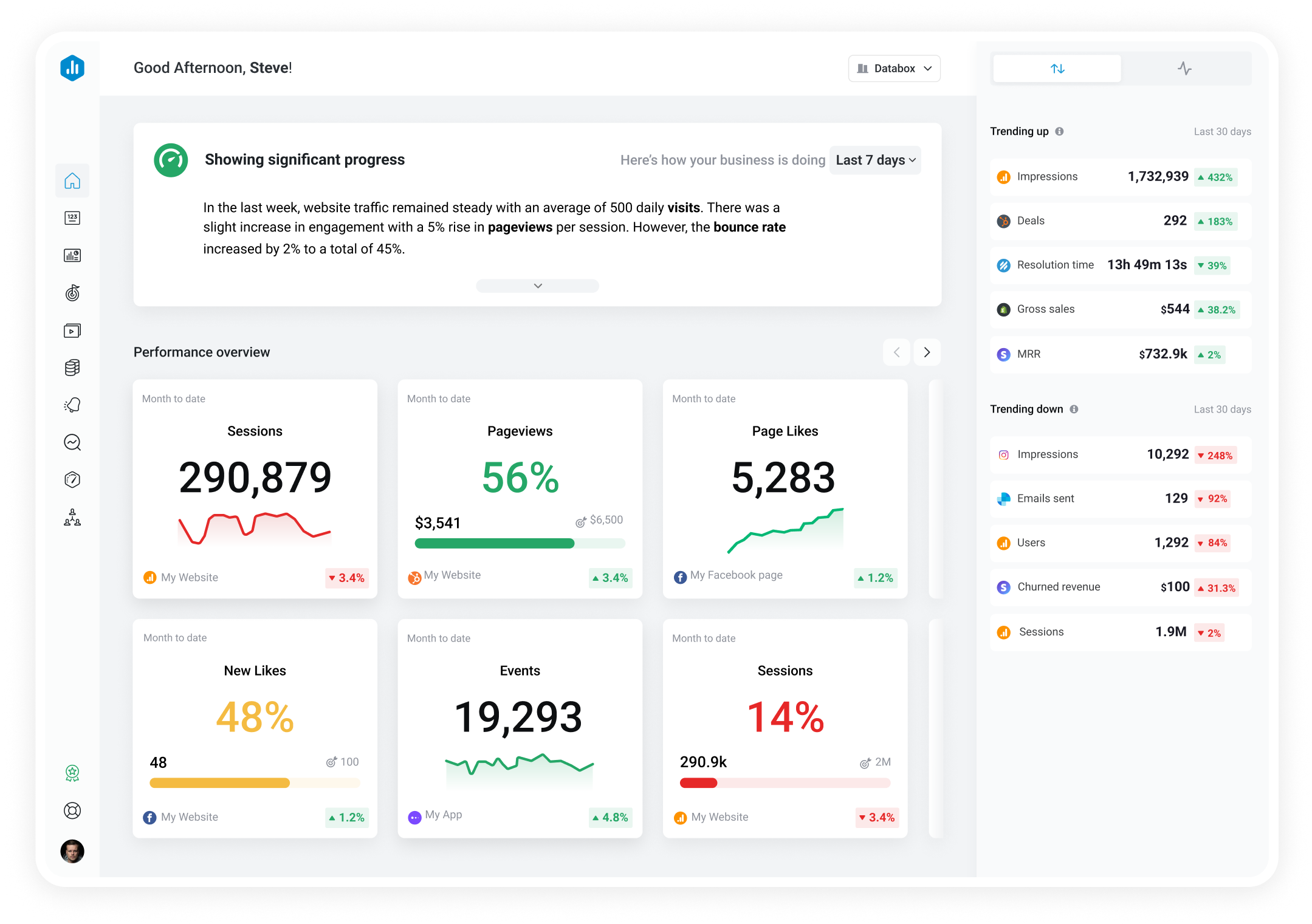Track all of your key business metrics from one screen
GET STARTED
 Stripe
Transactions
Stripe
Transactions Transactions metric represents the total number of successful payments processed through Stripe, including charges, refunds, and payouts, measured over a specific time period.
With Databox you can track all your metrics from various data sources in one place.
Transactions represent the total number of successful payment or purchase activities that took place within a specific platform that the business uses.
It encompasses all completed transactions and captures essential details such as the transaction amount, currency, payment method utilized, and transaction status.
By tracking transactions, businesses can get granular insights into their revenue generation, customer behavior, and payment processes.
To calculate the transactions metric, you need to simply count the number of successful transactions within the defined time period you’re interested in.
The formula is straightforward:
Transactions = Total number of successful payment or purchase activities
Let’s say an ecommerce website processed thousands of orders during a particular month, but wants to get an exact figure.
They saw these numbers:
… And so on for each day of June.
After adding up all the successful transactions for the month of June, the website can get the total count of transactions for that period.
Although, it’s unlikely that any business will have to manually calculate this metric since these figures can usually be found within the software that you use to process the transactions
Managing digital transactions can quickly get out of hand if you don’t have the right processes in place.
Sure, the transactions will be recorded in the software and you’ll probably have some reports to extract, but that’s not what we mean by proper tracking.
Here are some of the things you can do to better track your transactions and avoid getting lost in the numbers:
More resources to help you improve:

Used to show a simple Metric or to draw attention to one key number.

Used to illustrate numerical proportions through the size of the slices.

Used to show comparisons between values.
Databox is a business analytics software that allows you to track and visualize your most important metrics from any data source in one centralized platform.
To track Transactions using Databox, follow these steps:
 Goals
Goals Scorecards
Scorecards Metric Digest
Metric Digest Metric Builder
Metric Builder Data Calculations
Data Calculations Performance Screen
Performance Screen